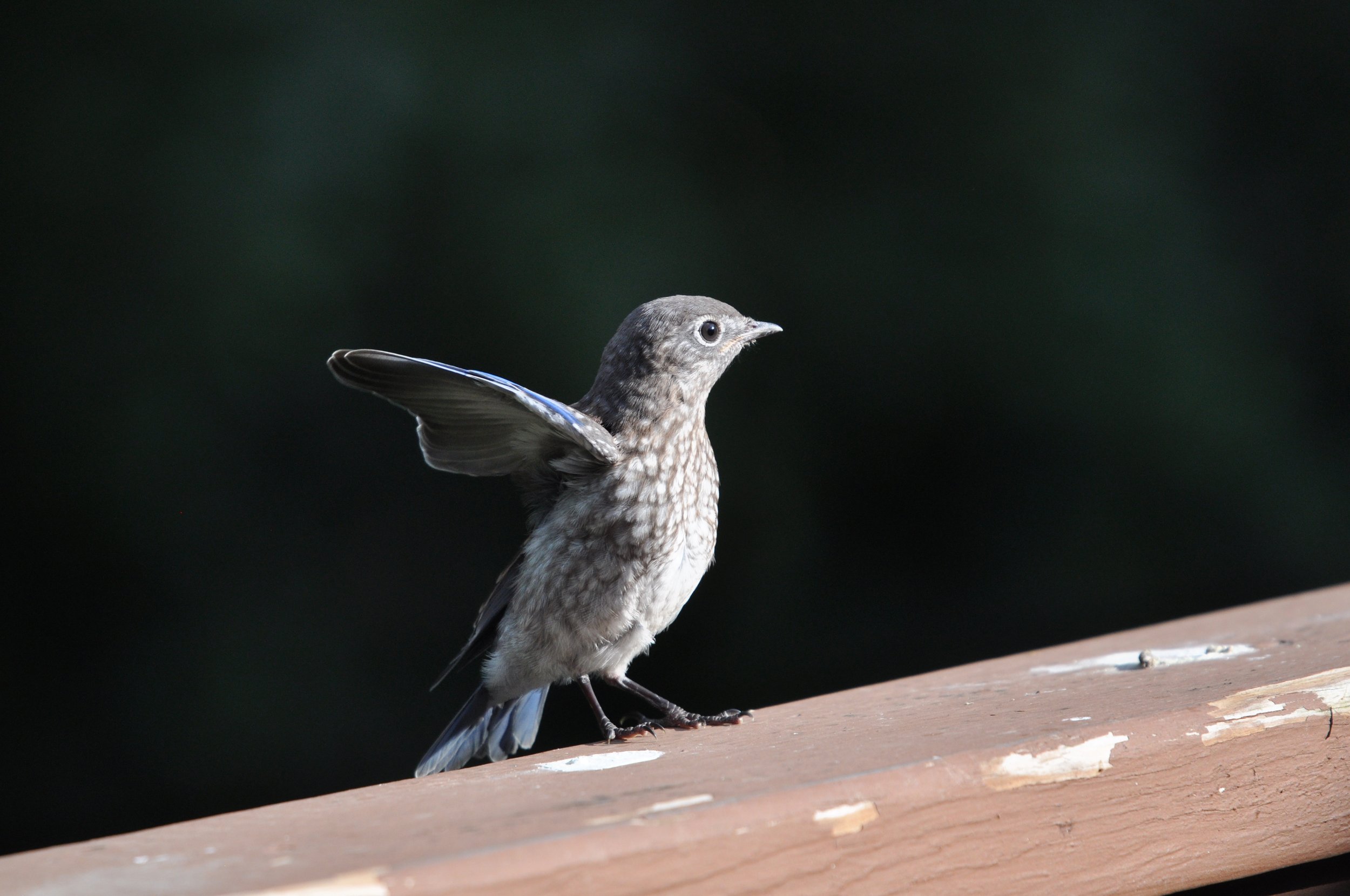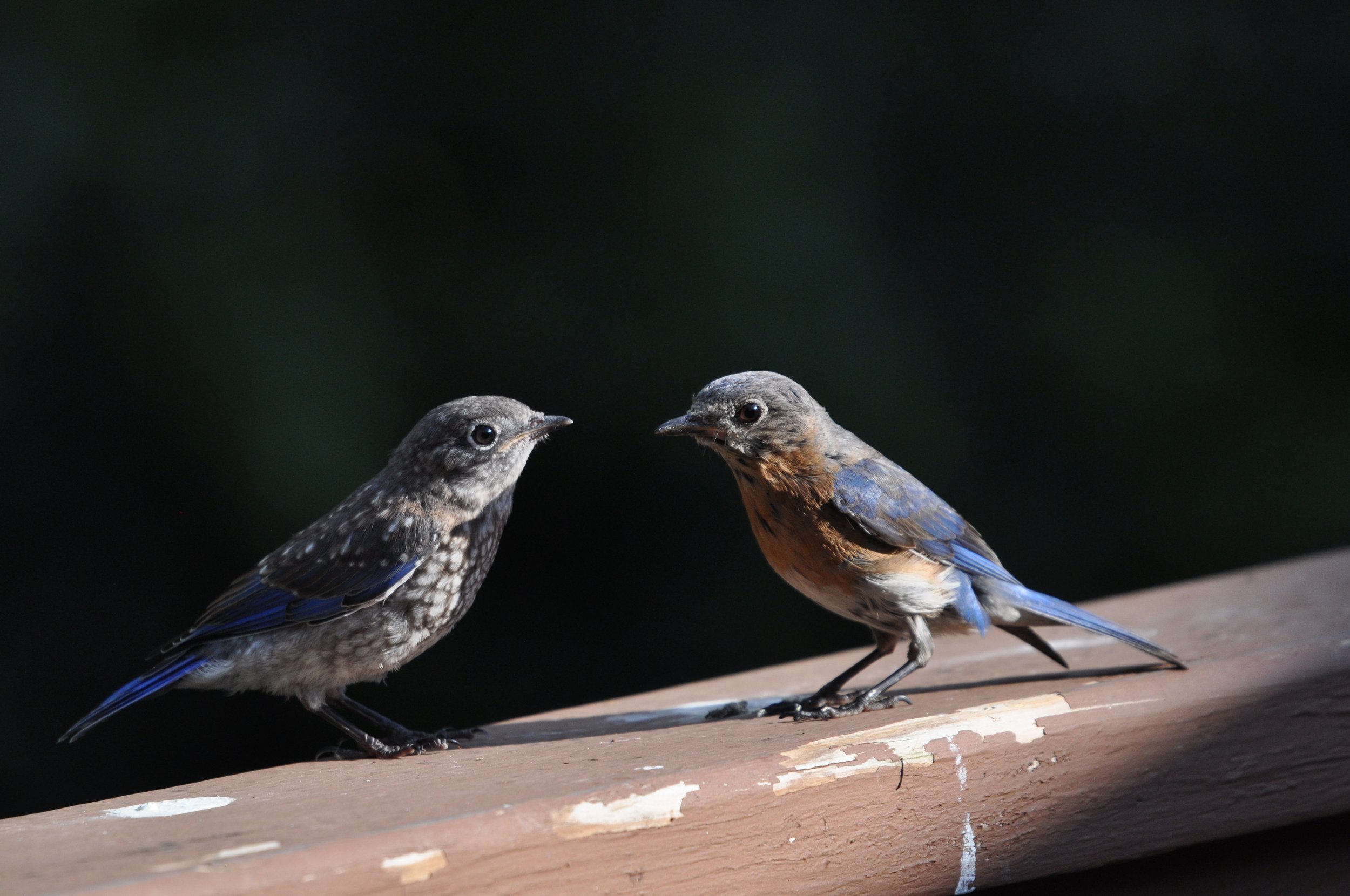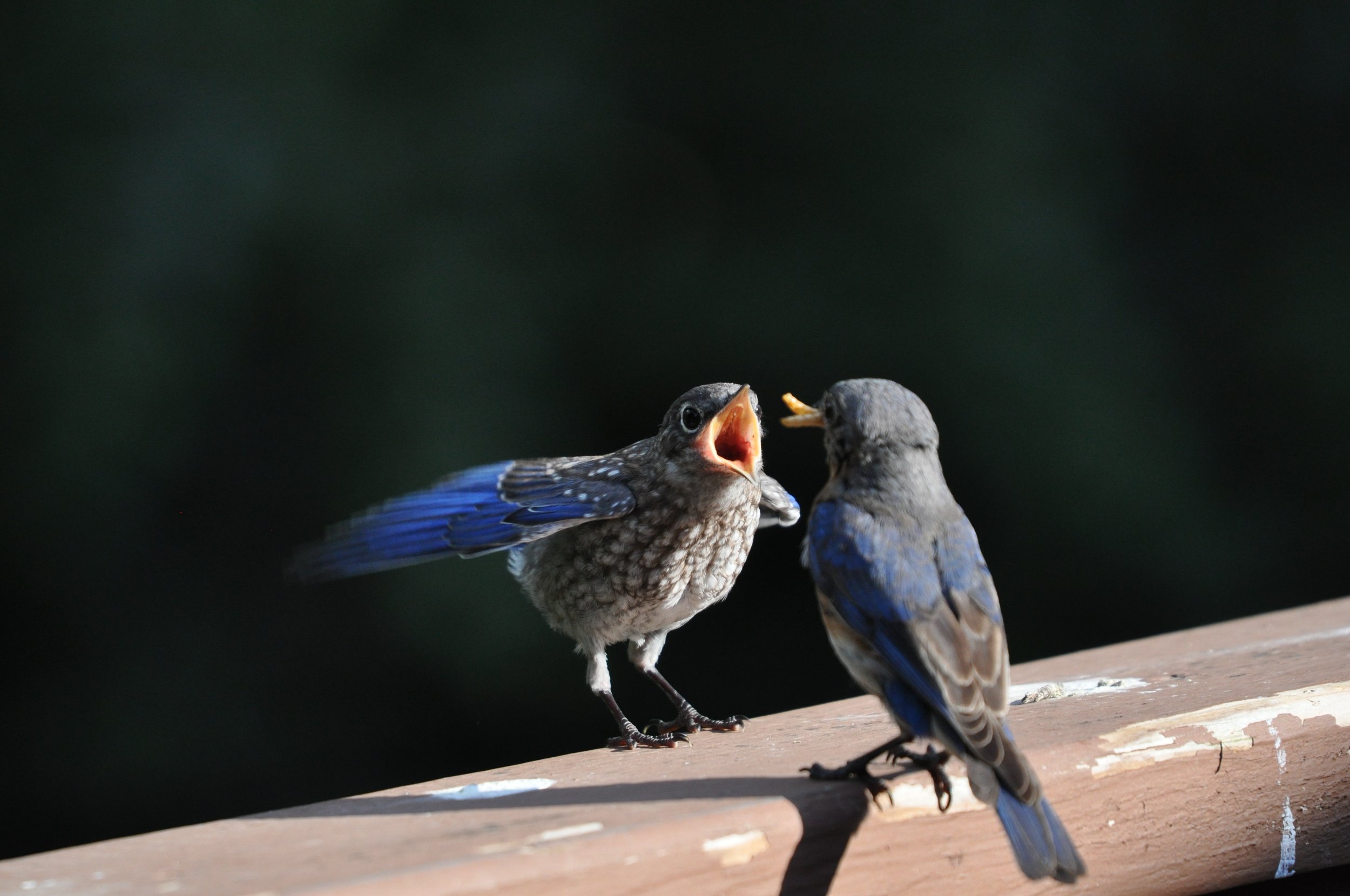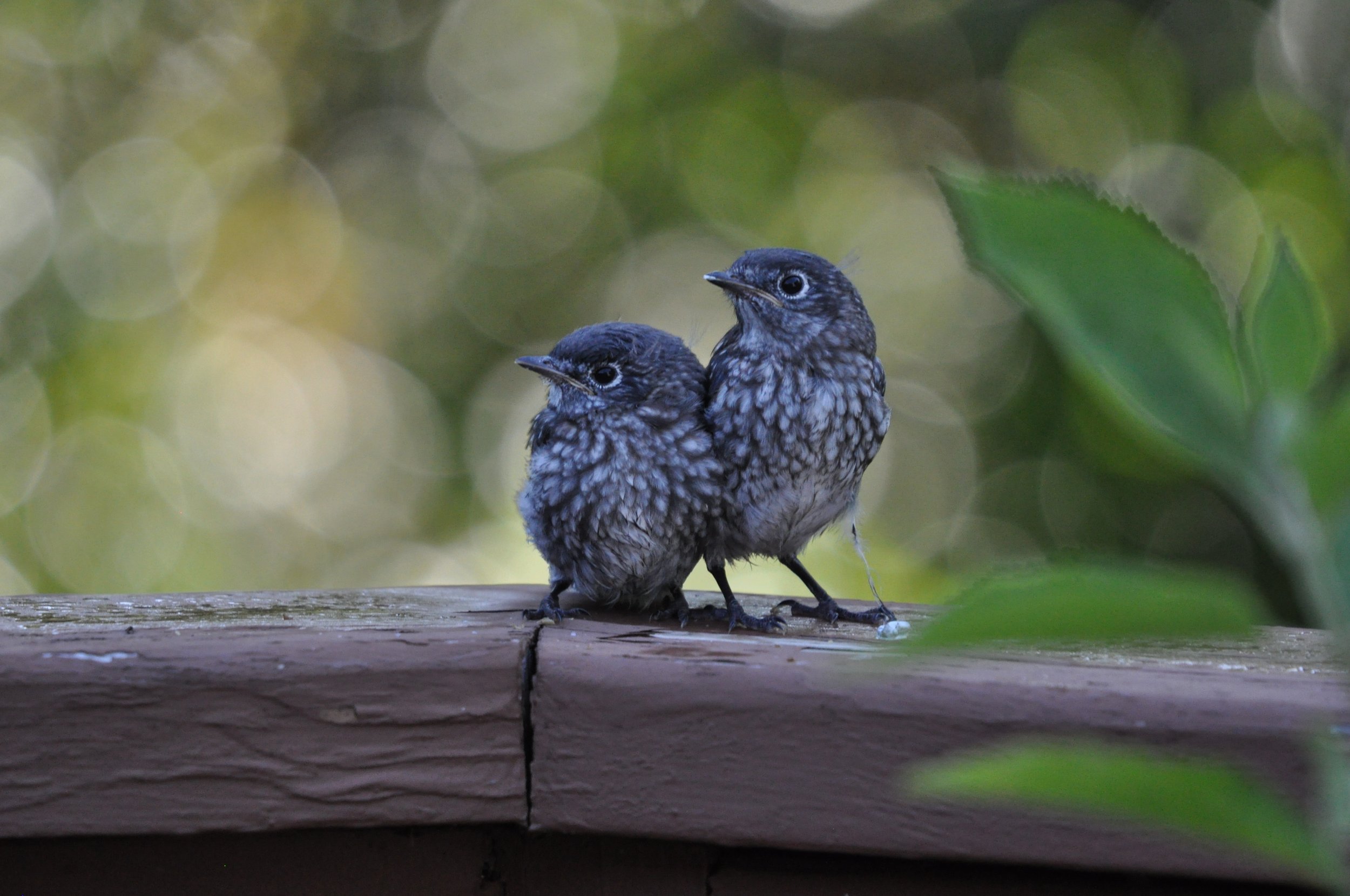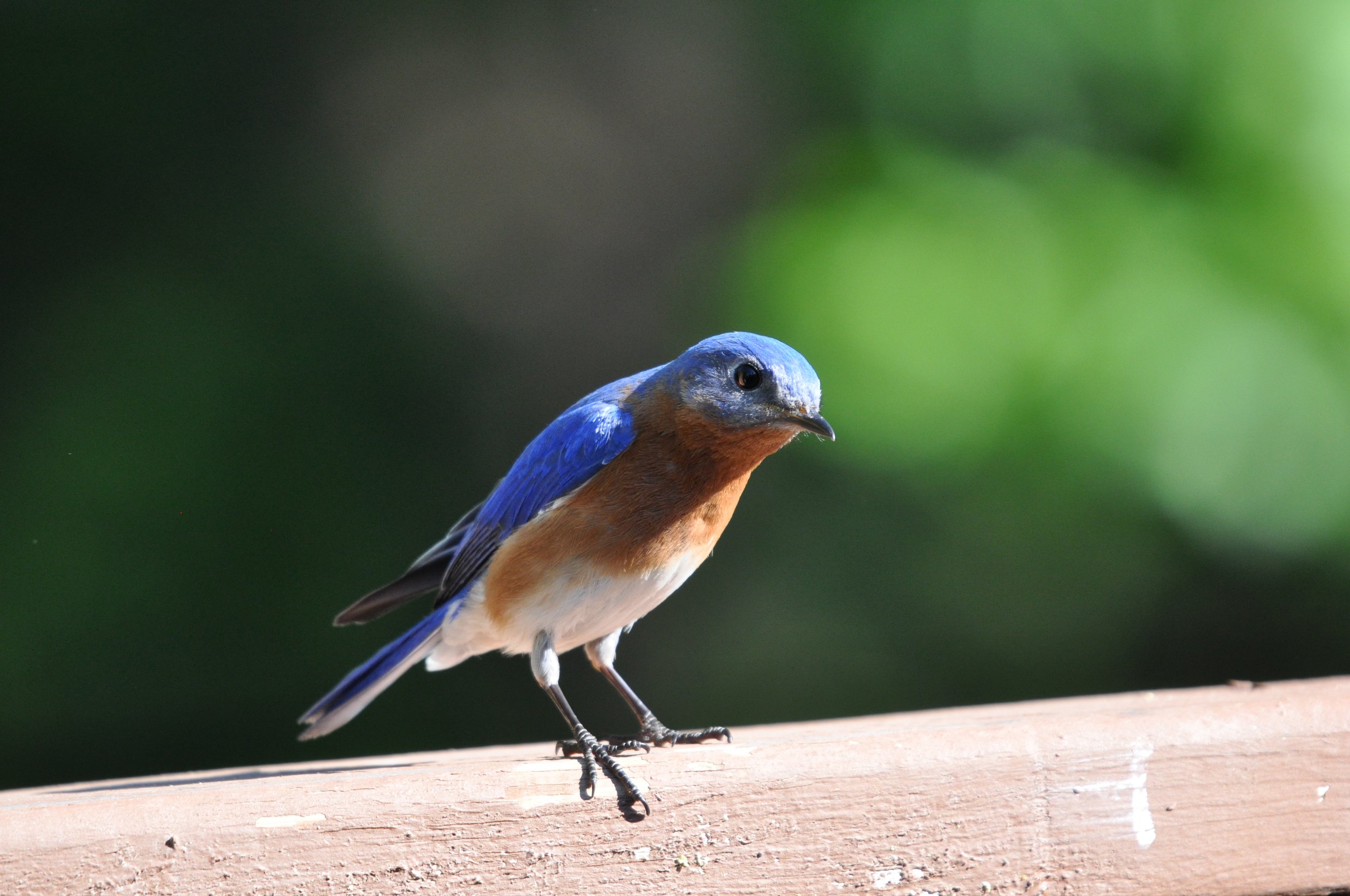How I Became a Nestbox Birder
by Lindsay Wilkes
Since moving from Chicago to a wooded area in North Carolina a few years ago, bird watching has become very “domestic” for me. Birding as an urbanite in Chicago is a lot more productive, in terms of species at least. You venture out, see as many species of birds as you can, spend a few moments with each and go on to the next. Now most of my birding is on the home front, spending time with not just the same species of birds, but the same individual birds day in and day out. Being able to observe these individuals daily has deepened my appreciation for birds more than I could have imagined. Most interesting of all has been watching them nest and raise young.
It all started with a bluebird box that a friend and I built for my birthday in January 2020. Even though I had not yet seen any bluebirds in my yard, I hoped the box would attract some in the spring. We mounted it in late February, and within minutes a Carolina Chickadee inspected it. She peered into the box, hopped inside, peered out of the box, then sat on the top. Repeat. She built a little moss nest over the next week or two. I was thrilled!
Then a pair of bluebirds did arrive, and they bullied the Chickadee out of that box. This was not what I expected. The nest box is already occupied! I felt badly for the chickadee. So, I zipped up to the garden center and I bought another nest box. The bluebirds took it over immediately. Victory! I thought, now everyone can have a box.
Incorrect. The male bluebird continued to chase away the chickadees from the old box, too. How frustrating! But I had ideas. I added an entry reducer to the old box, so only the chickadees could fit through the opening. Problem solved! Nope. The bluebirds did not care that they could not fit their fat bellies past the entry, and they still chased the chickadees away from the box. So, I took the old box down and mounted it in another part of the yard where the bluebirds couldn’t see it from their new box. Now the chickadees can have their box back! Or not, because then some House Wrens moved in. C’est la vie, chickadees.
This was just beginning of the lessons I would learn from nesting birds. (To their credit, the chickadees ended up finding a T-shaped pipe formerly used as a clothes drying rack in the brush and made a nest in there. Inventive!) Nest box monitoring became my new obsession. I read up on the guidelines from Cornell Lab on how to check the boxes and how to space them in the future to avoid conflicts. I started tracking the nests with the NestWatch app. I built stovepipe baffles to keep the rat snakes out—and there were a few large ones around! I fretted over my boxes during storms and got up in the middle of the night with a flashlight to make sure everything was secured. I shoed away at least one cowbird and worried over the House Wren coming over to peck at them. I never wanted to leave the house because I might miss something. (Those were COVID lockdown days, and there weren’t other options anyway.) Over just a few weeks, I had become a “bird mom,” thinking of nothing else but these nests. It was a lot more work than I realized—and a lot more worry! But I was glad to give every ounce of it.
When the bluebirds hatched, I felt like a new grandparent! Their tiny, squishy pink bodies were so alien looking! It was hard to imagine that in less than 3 weeks they would be flying. The parents were feeding constantly and occasionally exited the box carrying white fecal sacs from the young. It was a team effort. Each evening the mother bluebird tucked in around dusk and the father bluebird perched in a dogwood branch above the box for the night. The muted little chirps of the nestlings became a loud chorus after a week or so when the parents brought in food. Hearing them made me chuckle and smile.
Finally, around five in the evening in late May, a little speckled face appeared in the entry of the box. His expression was irritated, or perhaps perplexed. I suppose seeing bright light for the first time after weeks in a dark box does that! The parents were nearby chittering away. Suddenly the little bird launched himself out onto a nearby tree stump—his first flight! The parents quickly swooped over and encouraged him upward into the nearby trees. One by one, three more bold little birds made the same exit. It all happened within 15 minutes. My heart swelled with joy! We did it! My first successful nest box. It wasn’t without some heartache. The fifth nestling, unfortunately, did not thrive. He remained in the box overnight and fledged the next morning. He was less plump than the others, and we knew he probably wouldn’t make it. The father bird fed him and tried to encourage him into the tree, but he never did. We didn’t see him again after a day or two.
Later in the week, I took my morning coffee out to the deck when the parents arrived at my bird feeder with all four of their remaining fledglings in tow, just feet from where I sat! It was as if they were saying, “Here they are! Thanks for your help and snacks!” The young seemed carefree, boisterously bobbing around and taking mealworm from the busy parents.
The pair had another brood of just two the next month. All eight birds stuck around my yard through the winter using my well-stocked feeders and suet cakes. The young dispersed in early spring and the adult pair built another nest in one of my boxes. So did a pair of chickadees. We moved to a new house before I could see them through, but the new family that moved in said they thought both had lots of babies. We’ll assume the best!
I learn something new about nesting birds every day, and I’ve tweaked the way I manage the boxes over the season. One thing I’ve observed is that there are slight differences in how each pair manages their nests. Each one is unique in how they interact, their level of nervousness or attentiveness. This year I’ve had successful nests from two bluebird pairs—one on their third brood— Carolina Chickadees, Tufted Titmice, and Brown-headed Nuthatches. I’m hoping to woo a Great Crested Flycatcher and either an Eastern Phoebe or an American Robin with a nest shelf I built.
It’s worth noting that no other pair of birds has been as relaxed as my first bluebird pair. To date, they are the only pair whose fledglings I have seen and tracked daily starting the day they left the nest. All fledglings I’ve housed since have disappeared into the canopy for weeks before I see them again, if I ever see them at all. Having that first brood so close is one of my most cherished moments. Being able to enjoy that family, knowing everything those birds had gone through—from competing for a box, guarding it from predators, meticulously building a nest, caring for it for 5–6 weeks—was incredibly special. If there is a spark bird for nest box monitoring, it was those two!
